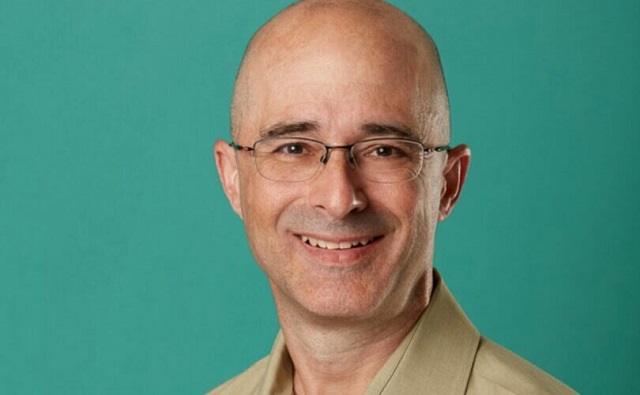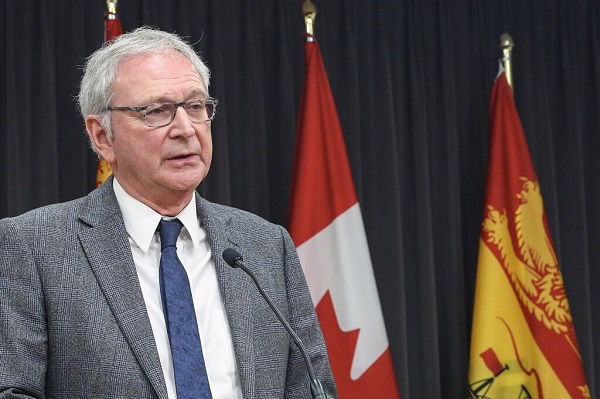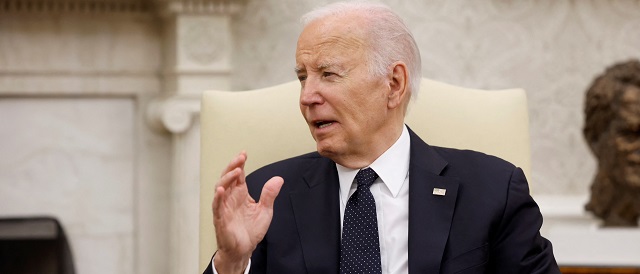Uncategorized
Sears files for Chapter 11 amid plunging sales, massive debt

NEW YORK — Sears filed for Chapter 11 bankruptcy protection Monday, buckling under its massive debt load and staggering losses.
The question now is whether a smaller version of the company that once dominated the American retail landscape can remain viable or whether the iconic brand will be forced out of business.
Sears, which started as a mail order
“This is a company that in the 1950s stood like a colossus over the American retail landscape,” said Craig Johnson, president of Customer Growth Partners, a retail consultancy. “Hopefully, a smaller new Sears will be healthier.”
The company has struggled with outdated stores and complaints about customer service. That’s in contrast with chains like Walmart, Target, Best Buy and Macy’s, which have been enjoying stronger sales as they benefit from a robust economy and efforts to make the shopping experience more inviting by investing heavily in remodeling and de-cluttering their stores.
Sears Holdings, which operates both Sears and Kmart stores, will close 142 unprofitable stores near the end of the year, with liquidation sales expected to begin shortly. That’s in addition to the closure of 46 unprofitable stores that had already been announced. Edward S. Lampert has stepped down as CEO but will remain chairman of the board. A new Office of the CEO will be responsible for managing day-to-day operations.
Sears joins a growing list of retailers that have filed for bankruptcy or liquidated in the last few years amid a fiercely competitive climate. Some, like Payless ShoeSource, successfully emerged from reorganization in bankruptcy court. But plenty of others like, Toys R Us and Bon-Ton Stores Inc., haven’t. Both retailers were forced to shutter their operations this year soon after Chapter 11 filings.
Given its sheer size, Sears’ bankruptcy filing will have wide ripple effects on everything from already ailing landlords to its tens of thousands of workers.
Lampert, the largest shareholder, has been loaning out his own money for years and has put together deals to prop up the company, which in turn has benefited his own ESL hedge fund.
Last year, Sears sold its famous Craftsman brand to Stanley Black & Decker Inc., following earlier moves to spin off pieces of its Sears Hometown and Outlet division and Lands’ End.
In recent weeks, Lampert has been pushing for a debt restructuring and offering to buy some of Sears’ key assets, like Kenmore, through his hedge fund as a $134 million debt repayment came due on Monday. Lampert personally owns 31
“It is all well and good to undertake financial engineering, but the company is in the business of retailing and without a clear retail plan, the firm simply has no reason to exist,” said Neil Saunders, managing director of GlobalData Retail, in a recent analyst note.
Sears’ stock has fallen from about $6 over the past year to below the minimum $1 level that Nasdaq stocks are required to trade in order to remain on the stock index. In April 2007, shares were trading at around $141. The company, which once had 350,000 workers, has seen its workforce shrink to fewer than 90,000 people as of earlier this year.
As of May, it had fewer than 900 stores, down from a 2012 peak of 4,000.
In a March 2017 government filing, Sears said there was “substantial doubt” it would be able to keep its doors open — but insisted its turnaround efforts would mitigate that risk.
Lampert pledged to return Sears to greatness by leveraging its best-known brands and its vast holdings of land, and more recently planned to entice customers with a loyalty program. But losses continued and the company struggled to get more people through the doors or to shop online.
Jennifer Roberts, 36, of Dayton, Ohio, was a long-time fan of Sears and has fond memories of shopping there for clothes as a child. But in recent years, she’s been disappointed by the lack of customer service and outdated stores.
“My mom had always bought her appliances from Sears. That’s where my dad got his tools,” she said. “But they don’t care about their customers anymore.”
She said a refrigerator her mother bought at Sears broke after two years and still hasn’t been fixed.
“If they don’t value a customer, then they don’t need my money,” Roberts said.
Sales at the company’s established locations tumbled nearly 4
“The problem in Sears’ case is that it is a poor retailer,” Saunders wrote in his analyst note. “Put bluntly, it has failed on every facet of retailing from assortment to service to merchandise to basic shop keeping standards. Under benign conditions, this would be problematic enough but in today’s hyper-competitive retail environment it is a recipe for failure on a grand scale.”
For decades, Sears was king of the American shopping landscape. Sears, Roebuck and Co.’s iconic
Store shelves have been left bare as many vendors have demanded more stringent payment terms, says Mark Cohen, a professor of retailing at Columbia University and a former Sears executive.
Meanwhile, Sears workers are nervous about what kind of severance they’ll receive if their stores close.
John Germann, 46, works full-time and makes $14 per hour as the lead worker unloading merchandise from trucks at the Chicago Ridge, Illinois, store, which has been drastically reducing its staff since he started nine years ago. Germann now has only 11 people on his team, compared with about 30 a few years ago.
“We’re doing the job of two to three people. It’s not safe,” he said. “We’re lifting treadmills and refrigerators.”
Anne D’Innocenzio, The Associated Press
Uncategorized
RCMP recruitment failure has Alberta advocacy group calling for Provincial Police Service

News release from Free Alberta Strategy (A Strong And Sovereign Alberta Within Canada)
“Make no mistake, we are paying for these services that we aren’t receiving. Alberta’s taxpayers are paying tens of millions of dollars for nearly 400 vacant RCMP officer positions – for boots that are not on the ground.”
A recent report from the Royal Canadian Mounted Police (RCMP)’s independent Management Advisory Board had findings that are nothing short of alarming:
“Federal policing has now arrived at a critical juncture of its sustainability, which present risks for the national security and safety of Canada, its people, and its interests,” says the report.
After over a year of diligent study, the Board has been tirelessly firing off flares, signalling to all who will listen: the very foundation of our national public safety apparatus may be at risk of faltering.
This is doubly problematic because, as you well know, the RCMP is also responsible for boots-on-the-ground policing in large parts of the country, including many rural and remote areas – including in Alberta.
Rural crime has been a longstanding issue in Alberta, and social disorder continues to make headlines nightly.
Alberta Minister of Public Safety, Mike Ellis, took to social media platform X (formerly known as Twitter) to express his opinion:
“The independent report finds the RCMP has struggled in recent years to recruit and retain regular members, a problem that’s particularly acute in federal policing. This is not about the hard-working men and women on the frontline: they are doing everything they can. The reality is the RCMP do not have enough officers to police communities in Canada effectively.”
Ellis has been ahead of this story for months now.
In March, Ellis stated that:
“… on average, Alberta has an RCMP officer vacancy rate of 20 per cent. This means that Alberta is only being served by 1,522 of the 1,911 RCMP officers that the federal government has authorized for Alberta.”
“Make no mistake, we are paying for these services that we aren’t receiving. Alberta’s taxpayers are paying tens of millions of dollars for nearly 400 vacant RCMP officer positions – for boots that are not on the ground.”
The consequences of this capacity crisis are far-reaching.
Not only does it jeopardize the safety of Albertans, but it also undermines the credibility of Canada’s federal police force on the international stage.
With limited resources and personnel, the RCMP’s ability to address pressing national and global security concerns is severely compromised.
The Management Advisory Board, created in 2019 by the federal government to provide external advice to the RCMP commissioner, set up a task force in the fall of 2022 to study the federal policing program.
Overall, the report says budget and personnel shortfalls have left the RCMP “operationally limited,” restricting the number of cases it can take on annually.
Here are some more highlights from the report:
“Canada and its people have already begun to see the repercussions of the federal policing program being stretched thin.”
“Federal policing’s overall eroding capacity may have implications for the credibility of Canada’s federal police force and its investigations on the international stage.”
“Ultimately, this may influence Canada’s overall approach and standing in international politics, including its ability to advance global priorities.”
Clearly, we cannot afford to wait any longer.
Municipalities can ease the burden on our national security services by establishing municipal policing.
Several cities in Alberta already have their own police authorities, and the provincial government is providing funding for others interested in exploring this option.
Grande Prairie is already in the process of establishing their own municipal police service.
No word on how many other municipalities have taken the government up on their offer.
Unfortunately, President of Alberta Municipalities Tyler Gandam (also Mayor of Wetaskiwin) is featured prominently on the National Police Federation’s “Keep Alberta RCMP” website.
Interestingly, the Keep Alberta RCMP website doesn’t mention the fact that the advisory board even exists.
It doesn’t mention the report.
The notion that our federal policing infrastructure teeters on the brink of instability while Gandam appears to be asleep at the wheel, is deeply disconcerting.
The safety and security of Albertans must remain our top priority.
We cannot afford to wait any longer.
The time has come for the province to take swift and decisive measures to bolster policing capabilities in Alberta.
It’s time for Alberta to seriously consider the establishment of an Alberta Provincial Police Service.
It has been one of the core tenets of the Free Alberta Strategy.
If you agree, please reach out to your municipality and ask them to take steps to protect your community.
Together, we can keep Alberta safe.
Regards,
The Free Alberta Strategy Team
P.S. We’re hoping you’ll consider contributing to our cause. Your generous donation helps us make a positive impact in our community. No need to worry about any hold-ups or threats here. We’re just passionate about making a difference, and your support goes a long way in helping us achieve our goals.
Uncategorized
Making Alberta a geothermal energy leader

Eavor announces it’s the #1 geothermal energy startup company in the world – January 2024
Alberta is creating Canada’s first geothermal test site to advance drilling innovation, reduce emissions and create jobs.
Geothermal energy uses naturally occurring heat within the earth to heat water and buildings and generate power, with few emissions or environmental impacts. Alberta has vast pockets of heat below ground, making the province Canada’s geothermal leader, but testing and developing new technologies can be a barrier for many companies. Unlike the United States, Japan and other countries, Canada does not currently have an open-access test site to help spur innovation.
Alberta is taking the first steps to create a new Alberta Drilling Accelerator. This groundbreaking facility would be the first of its kind in Canada, establishing Alberta as a global hub for geothermal technology. This will drive new innovations in geothermal and other clean energy projects that can reduce emissions and power communities around the world.
To kick-start the project, the Alberta government is investing $750,000 to conduct a feasibility study led by Calgary-based Eavor Technologies and other stakeholders. The study is the first step in assessing the proposed facility. It will include identifying a site, business planning, research on the governance model, an economic impact analysis and stakeholder engagement that will lay the groundwork for the initial planning stages of the project.
“Alberta has been a global energy leader for more than a century, renowned for our skilled workforce, innovation and one of the largest oil and gas reserves on the planet. The proposed Alberta Drilling Accelerator presents enormous potential to help our province lead the next wave of energy projects here at home and around the world that reduce emissions, create jobs and enhance energy security.”
The Alberta Drilling Accelerator would help companies test out and develop new geothermal drilling techniques or technologies to reduce emissions and drive growth across the clean energy sector. It would be an open-access, technology-agnostic drilling test facility capable of drilling in challenging environments, including deep depths, high temperatures and different rock types.
The accelerator also would help speed up the development of carbon capture, utilization and storage; helium; critical minerals; and other clean technologies and commodities that rely on Alberta’s drilling sector. All of this helps attract investment and bring new technologies to scale in Canada.
“With cumulative geothermal investment poised to reach $1 trillion by 2050, a geothermal arms race is very much underway to commercialize novel drilling techniques that accelerate geothermal development – exhibited by testing facilities in the United States, China and Iceland. As Canada’s first geothermal test bed, the Alberta Drilling Accelerator will help bring geothermal technologies to scale, supporting companies like Eavor. We commend the Government of Alberta for this bold initiative.”
“We are proud to witness Eavor, a CDL-Rockies alumni company, create new opportunities for innovators like themselves to advance the adoption of energy transition technologies like geothermal. The Alberta Drilling Accelerator will further solidify Alberta’s position as a leader in the global sustainable energy landscape.”
If the feasibility study shows the facility is economically and environmentally viable, and if the project is approved by the Alberta government, the facility will start taking shape at the selected site and drilling could start as early as 2025.
“Canada is home to the most advanced drilling technology in the world. Not only do our members support the responsible development of oil and gas, but we are integral in the extraction of new energy resources like geothermal and critical minerals. Our workers are at the epicentre of Canada’s energy transformation. Our people, technology and processes are leading the way towards a more diverse energy future. The Alberta Drilling Accelerator is a government-enabled policy approach to expand Alberta’s drilling capacity and reach its full potential as the world’s most diverse and technologically advanced producer and exporter of sustainable energy and critical minerals.”
“The Alberta Drilling Accelerator is a testament to Alberta’s innovative and entrepreneurial spirit. Leveraging our oil and gas sector expertise, Alberta is poised to become the global leader in developing new geothermal technologies that will play an integral role in reducing emissions while supporting job creation.”
Quick facts
- The Canadian Association of Energy Contractors estimates that one active drilling rig, whether drilling for natural gas or geothermal, creates approximately 220 direct and indirect jobs and
$1 million in tax revenue. - In 2019, Eavor received $2 million in provincial funding through Emissions Reduction Alberta and Alberta Innovates for the world’s first closed-loop geothermal system.
Related information
-
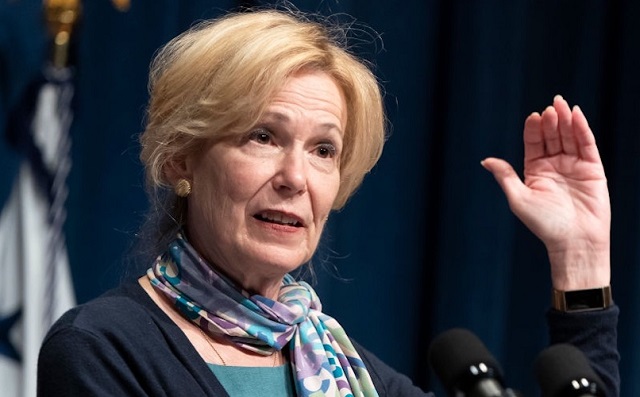
 COVID-192 days ago
COVID-192 days agoFormer COVID coordinator Deborah Birx now admits jabs could have injured ‘thousands’
-

 Opinion2 days ago
Opinion2 days agoCanada’s fertility, marriage rates plummet to record lows: report
-

 Health1 day ago
Health1 day agoPrivate Footage Reveals Leading Medical Org’s Efforts To ‘Normalize’ Gender Ideology
-

 Alberta1 day ago
Alberta1 day agoRed Deer Hospital Lottery – Second Chance Early Bird Prize!!!
-

 armed forces1 day ago
armed forces1 day agoTrudeau government has spent $10 million promoting DEI in the military as recruitment flounders
-
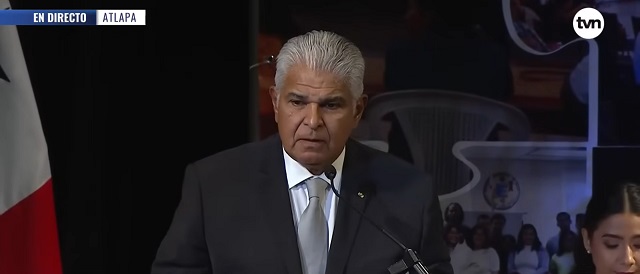
 illegal immigration2 days ago
illegal immigration2 days agoPanama’s Incoming President Wants To Shut Down His Country’s Most Treacherous Route For Migrants — But Will It Work?
-

 COVID-1924 hours ago
COVID-1924 hours agoMore victories for freedom as ArriveCAN charges dropped and fines reduced
-

 City of Red Deer2 days ago
City of Red Deer2 days agoCity Council paving the way for more house suites, backyard suites, tiny homes, and duplexes



